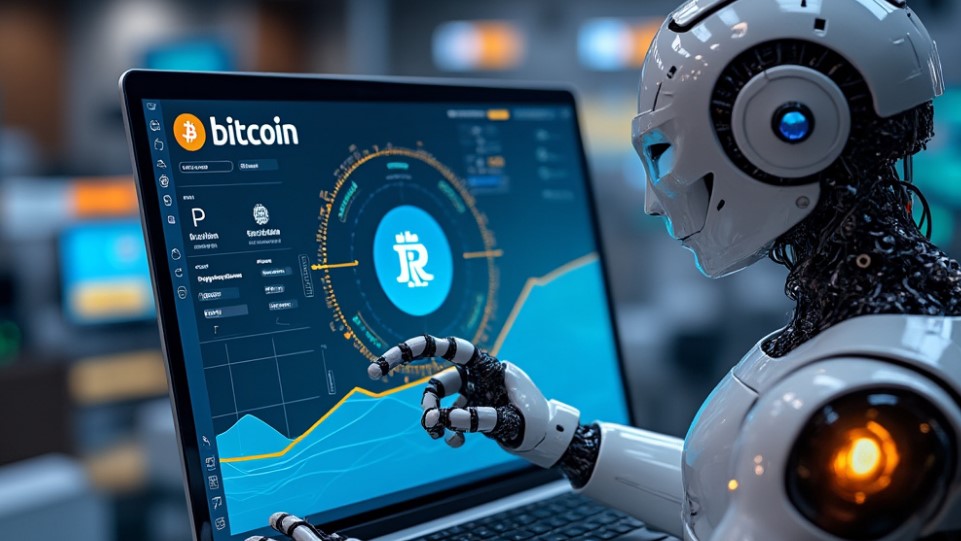The integration of artificial intelligence (AI) into the world of cryptocurrencies marked a technological and financial trend in 2024.
As CriptoNoticias already explained, these assets integrate AI technology to improve its functions and thus provide multiple innovative solutions . applied to market platforms and the artificial intelligence industry. To do this, they use advanced algorithms to analyze data, predict trends and optimize transactions autonomously.
However, the dizzying progress that this technology has shown could encounter its first technical obstacles.
This is how he explains it Jurica Dujmoviccrypto trends researcher and writer, who highlights the impact that AI has had on the digital currency industry. Although points out that recent developments cannot depend solely on increasing computing power.
To argue his thesis, he indicates that Chip development technologies could be reaching their limits, according to Moore’s Law. “The rule states that the number of transistors on a chip will double every two years, increasing speed and processing power. This means that every two years our technology improves, and that is essential to constantly improve our AI capabilities,” he adds.
Specifically, the author emphasizes that the challenge that AI companies have is to explore new ways to optimize your resources to implement improvements in their efficiency and practical applications.
In his opinion, Dujmovic points out that, in the future, successful projects will be those that integrate practical AI capabilities to solve real-world problems.
In particular, the projects that would benefit the most are those that fall into the following subcategories: AI orchestrators, local AI, and a mix of old and new.
The specialist defines AI orchestrators as those “platforms that coordinate multiple AI models and tools to achieve complex objectives.”
One project that falls into this category is the Artificial Superintelligence Alliance (ASI) token, which was born as a result of the merger of Fetch.ai (FET) with SingularityNET (AGIX) and Ocean Protocol (OCEAN).
As reported, The objective of the merger is to strengthen a decentralized artificial intelligence platform.

Continuing with the local AI subcategory, Dujmovic believes that “we are headed towards a renaissance” of these assets and explains: “As models become more efficient when working with limited data and computational power, I expect more local AI applications to emerge. that can operate effectively on personal devices.”
Furthermore, he says: “This trend, in particular, could be very promising in the cryptocurrency space. “It aligns perfectly with the core values of cryptocurrencies: decentralization and individual sovereignty.”
Although it does not mention it, Bittensor (TAO) could fall into this subcategory. It is an AI protocol based on open source principles and throughout the month of October it registered more than 26 networks and their development is underway.
The protocol promises that, with some of those subnets, It will be possible to create images, music or automatically extract data from web pages in a few hoursall with AI.
Another solution that also prioritizes decentralization and the ability to operate on small networks is Render Network, a provider of a decentralized model. It stands out, mainly, for accelerating the process of graphic applications linked to AI. It is used by digital artists, designers and developers to do rendering tasks. Within this environment, users who lend their power to graphics processing units (GPUs) are rewarded with the native token, RNDR.
Finally, Dujmovic believes that those projects that mix the old with the new will be successful in the future. In this regard, he details: “Projects like these could navigate the complexities of DeFi protocols, optimize performance strategies across multiple chains, or even participate in DAO governance with sophisticated voting strategies based on real-time market conditions.” .
Near Protocol (NEAR) It is not an AI project, but its interoperability and flexibility makes it ideal as a base infrastructure for these initiatives. In fact, it recently launched an AI assistant called Chat.near.ia.
As CriptoNoticias has reported, the assistant is capable of executing actions using user instructions through “agent” modules within the Near network.
Dujmovic also has expectations that this sector will continue to grow in the coming years. AI is expected to empower the cryptocurrency sector like that of traditional finance.
According to data from the Statista firm, the size of its market will grow at a compound annual rate (CAGR) of 28.45% until 2030. “This would result in a market volume of 826 billion dollars in just six years!” highlights the specialist.

In conclusion, the author of the research highlights:
“The winners in this new AI landscape will not be those with the largest models or the most computing power.”
Jurica Dujmoviccrypto trends researcher and writer.


